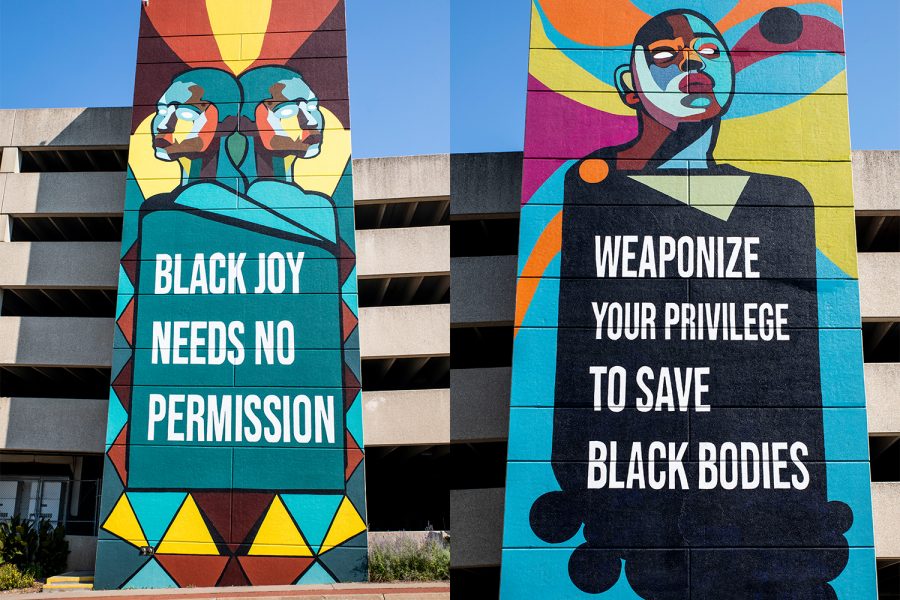Opinion | We need representations of Black joy in art
Artists of color are too often limited to art that portrays trauma or caters to a white audience, we need to uplift empowering stories and representation.
A mural is seen on Burlington Street on Monday, Aug. 30, 2021. Oracles of Iowa City is a mural project in collaboration with Public Space One and the Center for Afrofuturist Studies.
October 6, 2021
Art is often used as a platform for people of color to express their experience and shine a light on their identities. A lot of the most well-known representations of people of color are centered around oppression and trauma, like the movie 12 Years A Slave. However, representations of race should span to Black joy.
It’s hard, when given the privilege, not to feel an obligation to create work that speaks to inequality. It’s important to remember representation that empowers people of color through uplifting or mundane stories is important as well.
The only Black representation I grew up with that didn’t focus on shining a light on inequality or explaining Black identities for a white audience, was the show That’s so Raven on Disney Channel.
Outside of the art world, in school we learned Black people were enslaved, then they were saved by the Emancipation Proclamation, then Black people were further oppressed during the Jim Crow era, then Black people fought for their civil rights and were finally “free.”
Similarly, Native American representation in school was limited to the Trail of Tears and tales about Sacagawea and Pocahontas.
Outside of the erasure of Black history, there is also a lack of empowerment. While white students get to see people that look like them in positions of power from the classroom to movie screens, students of color only see their ancestors’ oppression.
Ultimately, it is demeaning for people of color only to see representation of themselves in positions of oppression. Sharing Black joy and everyday life experiences is incredibly important.
Museums have the potential to uplift the stories and identities of so many ethnic and racial groups. However, they fall guilty to the same erasure and lack of empowering representation.
Research has shown Black representation is lacking in the U.S. art museum sector. Black people account for 1.2 percent of the work in these museums. By contrast, 85.4 percent come from white artists and 87.4 percent are men.
Clearly, there is an overall lack of representation when it comes to artists of color in U.S. museums. Not only should there be more representation, but we also need to acknowledge that artists of color don’t always need to speak to their experiences or cater their work for a white audience.
It is, of course, important to create work that reveals the history and experiences of minorities that have been suppressed in this country. However, it is unproductive to only uplift Black stories when they express racial trauma.
Even now, in my own experiences with creative writing, it has been difficult to write pieces featuring Black characters without speaking to broader societal issues. Over time, it gets tiring writing, seeing, and being asked to do work that exposes oppression when outside of the work that is also part of my lived experience.
Books like Parable of the Sower by Octavia Butler and Binti by Nnedi Okorafor are excellent examples of how Black artists have no obligation to explain minority experiences in their works.
It is emotionally draining and debilitating for Black people to see more representation of people that look like them in videos of police brutality and protests than of Black joy. People of color deserve accurate and diverse representation catered to their experiences rather than teaching a white audience.
Columns reflect the opinions of the authors and are not necessarily those of the Editorial Board, The Daily Iowan, or other organizations in which the author may be involved.



